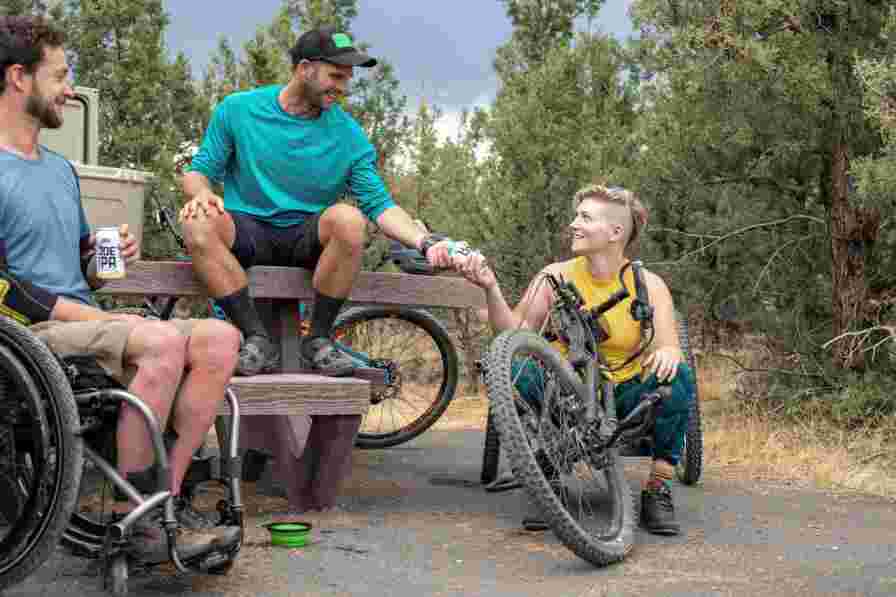
Table of Contents
Introduction
Living with limited mobility can be daunting and overwhelming, but it’s important to know that there are many strategies and resources to help you lead a fulfilling and active life. Whether your mobility issues are due to a chronic condition, injury, or illness, various approaches can help you enhance your mobility and maintain your independence. By learning about adaptive tools, implementing practical tips, and accessing supportive resources, you can empower yourself to live fully despite the challenges you may face.
This blog delves into the world of mobility assistance and aims to provide insight and guidance to those who need it most. With the right strategies and resources, living with limited mobility can be not only manageable but also an opportunity to explore new ways of living and thriving.
Embracing Adaptive Technology
Adaptive technology represents a major leap forward in improving mobility for individuals with diverse needs. These tools are crafted to facilitate daily tasks with greater ease and independence. For example, mobility aids such as walkers, canes, and wheelchairs offer stability and assist with movement, tailored to each person’s mobility requirements.
Furthermore, technological advancements have introduced innovative solutions like stair lifts, power scooters in Orem, and accessible vehicles. These advancements not only bolster independence but also enhance the overall quality of life by empowering individuals to engage in activities they cherish.
Creating an Accessible Living Space
Modifying your living space to be more accessible can significantly impact your daily life. Simple adjustments such as installing grab bars in bathrooms, widening doorways for wheelchair access, and lowering kitchen countertops can enhance mobility and ensure safety. Consider consulting with a professional occupational therapist or accessibility expert who can provide personalized recommendations tailored to your needs.
Moreover, smart home technology offers convenient solutions for individuals with limited mobility. Voice-activated assistants, smart lighting systems, and automated door openers can streamline tasks and improve accessibility within the home environment.
Adopting Lifestyle Modifications
Incorporating lifestyle modifications can also contribute to better mobility and overall well-being. Regular physical activity, tailored to your abilities, helps maintain strength, flexibility, and cardiovascular health. Consult with a physical therapist or rehabilitation specialist to develop a safe and effective exercise routine that accommodates your mobility challenges.
Furthermore, practicing good nutrition and maintaining a healthy weight can alleviate stress on joints and muscles, thereby enhancing mobility. A balanced diet rich in nutrients supports overall health and promotes physical resilience.
Accessing Supportive Resources
Navigating life with mobility issues often requires accessing supportive resources and services. Community organizations, disability advocacy groups, and healthcare providers offer valuable information, support networks, and assistance programs. These resources can help you connect with others facing similar challenges and provide access to specialized services such as transportation options, home care assistance, and adaptive sports programs.
Additionally, staying informed about your rights under disability laws and accessibility standards empowers you to advocate for yourself and ensure equal access to public spaces, workplaces, and recreational activities.
Cultivating a Positive Mindset
Maintaining a positive mindset is essential when facing mobility challenges. Focus on what you can control and celebrate your achievements, no matter how small they may seem. Engage in activities that bring you joy and fulfillment, whether it’s pursuing hobbies, spending time with loved ones, or volunteering within your community.
Seeking support from friends, family members, or a counselor can also provide emotional resilience and encouragement during difficult times. Remember that adapting to mobility challenges is a process, and it’s okay to seek help when needed.
Conclusion
Living fully with mobility challenges involves adopting proactive strategies, utilizing adaptive tools, accessing supportive resources, and nurturing a positive mindset. By embracing these approaches, individuals can enhance their mobility, maintain independence, and continue to pursue meaningful activities and goals. Each person’s journey is unique, and exploring various options empowers individuals to lead fulfilling lives despite mobility limitations.
Ultimately, with determination, support, and a proactive approach to enhancing mobility, individuals can thrive and enjoy a fulfilling life that is rich in experiences and opportunities.
You can also read our latest post


